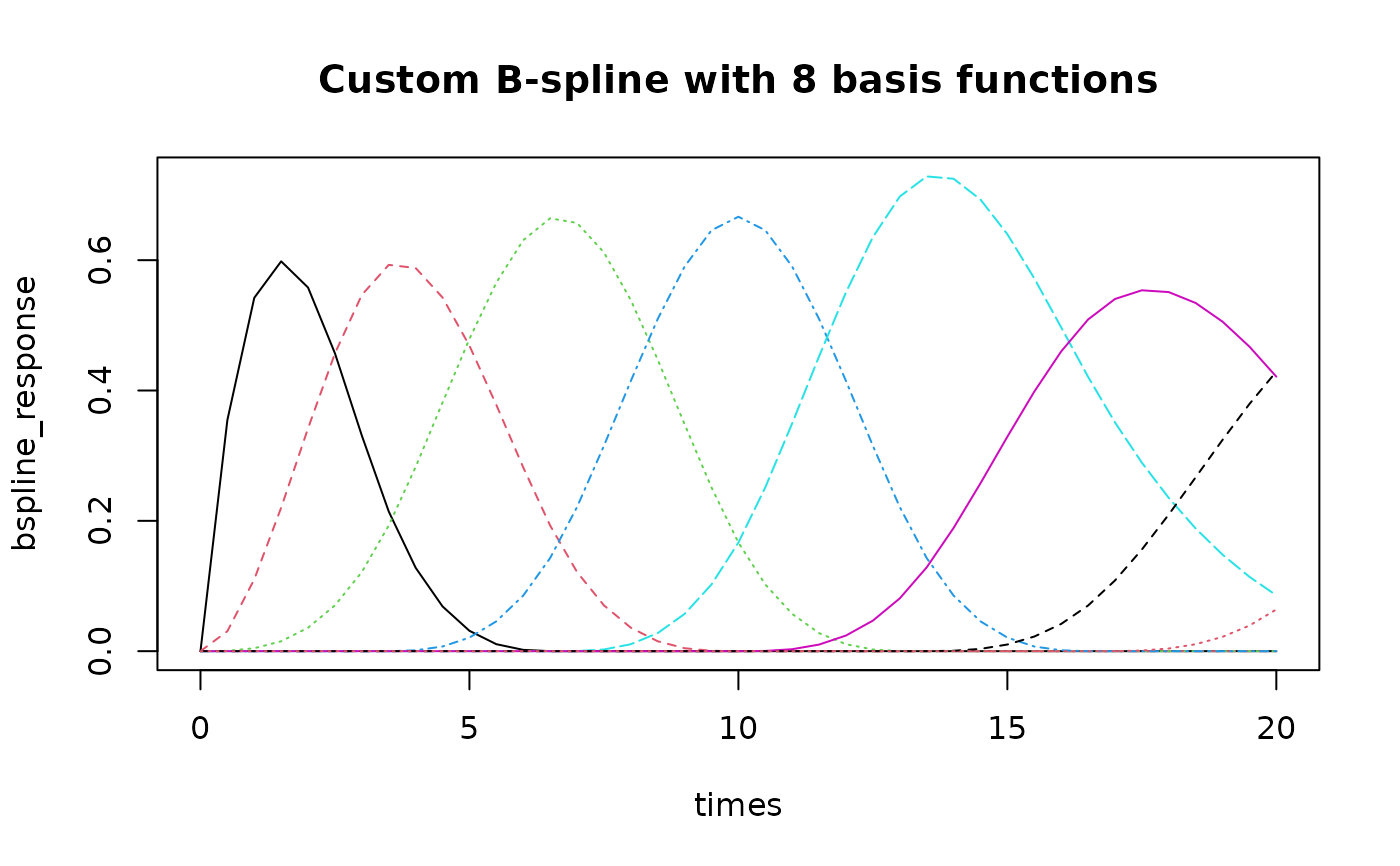A collection of pre-defined HRF objects for common fMRI analysis scenarios. These objects can be used directly in model specifications or as templates for creating custom HRFs.
Arguments
- t
Numeric vector of time points (in seconds) at which to evaluate the HRF
- P1, P2
Shape parameters for SPM canonical HRF (default: P1=5, P2=15)
- A1
Amplitude parameter for SPM canonical HRF (default: 0.0833)
- shape, rate
Parameters for gamma distribution HRF (default: shape=6, rate=1)
- mean, sd
Parameters for Gaussian HRF (default: mean=6, sd=2)
Value
When called as functions, return numeric vectors or matrices of HRF values.
When used as objects, they are HRF objects with class c("HRF", "function").
Canonical HRFs
HRF_SPMG1SPM canonical HRF (single basis function)
HRF_SPMG2SPM canonical HRF with temporal derivative (2 basis functions)
HRF_SPMG3SPM canonical HRF with temporal and dispersion derivatives (3 basis functions)
HRF_GAMMAGamma function-based HRF
HRF_GAUSSIANGaussian function-based HRF
Flexible Basis Sets
HRF_BSPLINEB-spline basis HRF (5 basis functions)
HRF_FIRFinite Impulse Response (FIR) basis HRF (12 basis functions)
Creating Custom Basis Sets
The pre-defined objects above have fixed numbers of basis functions. To create basis sets with custom parameters (e.g., different numbers of basis functions), use one of these approaches:
Using getHRF():
getHRF("fir", nbasis = 20)- FIR basis with 20 functionsgetHRF("bspline", nbasis = 10, span = 30)- B-spline with 10 functionsgetHRF("fourier", nbasis = 7)- Fourier basis with 7 functionsgetHRF("daguerre", nbasis = 5, scale = 3)- Daguerre basis
Using generator functions directly:
hrf_fir_generator(nbasis = 20, span = 30)hrf_bspline_generator(nbasis = 10, span = 30)hrf_fourier_generator(nbasis = 7, span = 24)hrf_daguerre_generator(nbasis = 5, scale = 3)
Usage
All HRF objects can be:
Called as functions with time argument:
HRF_SPMG1(t)Used in model specifications:
hrf(condition, basis = HRF_SPMG1)Evaluated with
evaluate()methodCombined with decorators like
lag_hrf()orblock_hrf()
See also
evaluate.HRF for evaluating HRF objects,
gen_hrf for creating HRFs with decorators,
list_available_hrfs for listing all HRF types,
getHRF for creating HRFs by name with custom parameters,
hrf_fir_generator, hrf_bspline_generator,
hrf_fourier_generator, hrf_daguerre_generator
for creating custom basis sets directly
Other hrf:
deriv(),
penalty_matrix()
Examples
# Evaluate HRFs at specific time points
times <- seq(0, 20, by = 0.5)
# Single basis canonical HRF
canonical_response <- HRF_SPMG1(times)
plot(times, canonical_response, type = "l", main = "SPM Canonical HRF")
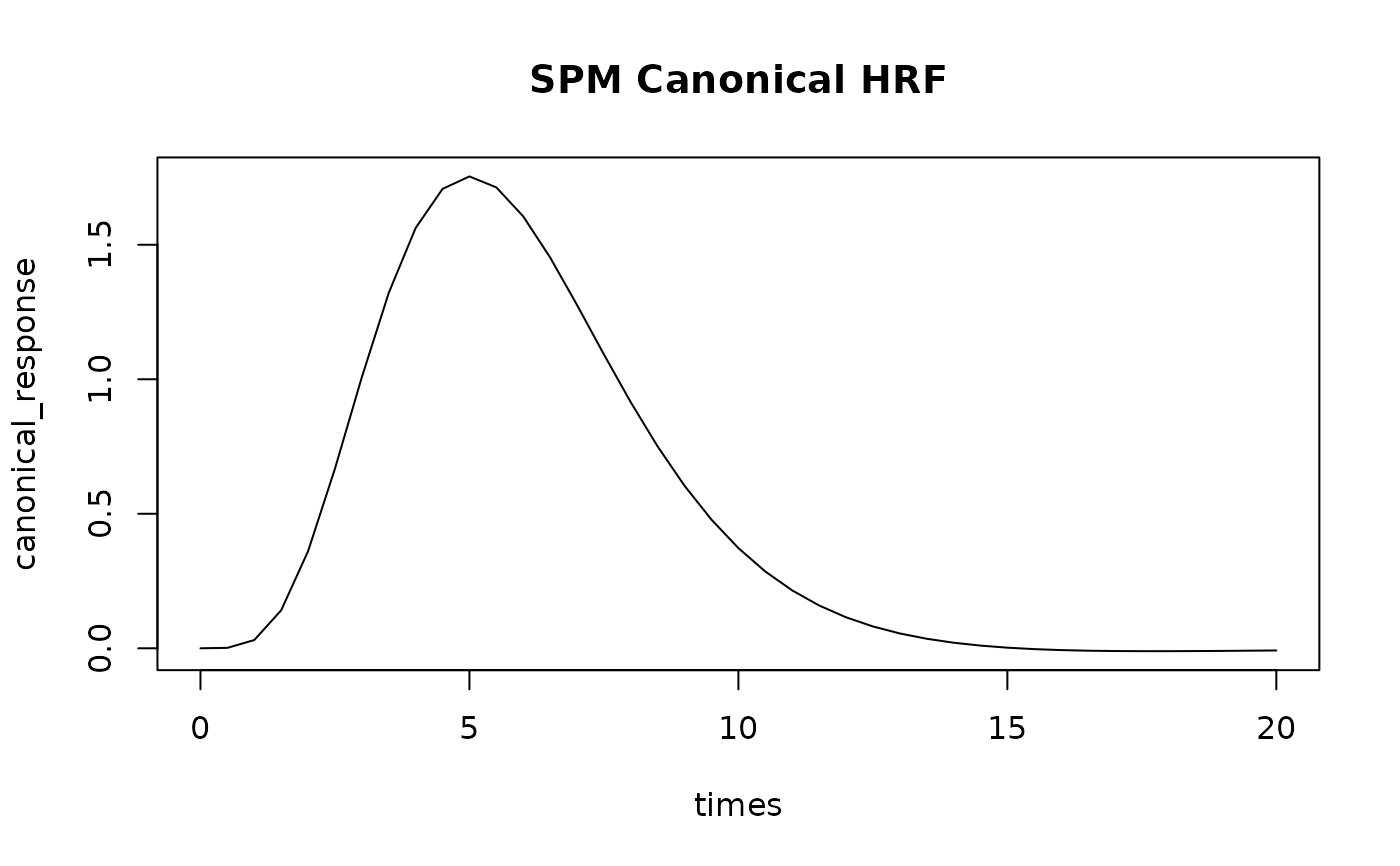 # Multi-basis HRF with derivatives
multi_response <- HRF_SPMG3(times) # Returns 3-column matrix
matplot(times, multi_response, type = "l", main = "SPM HRF with Derivatives")
# Multi-basis HRF with derivatives
multi_response <- HRF_SPMG3(times) # Returns 3-column matrix
matplot(times, multi_response, type = "l", main = "SPM HRF with Derivatives")
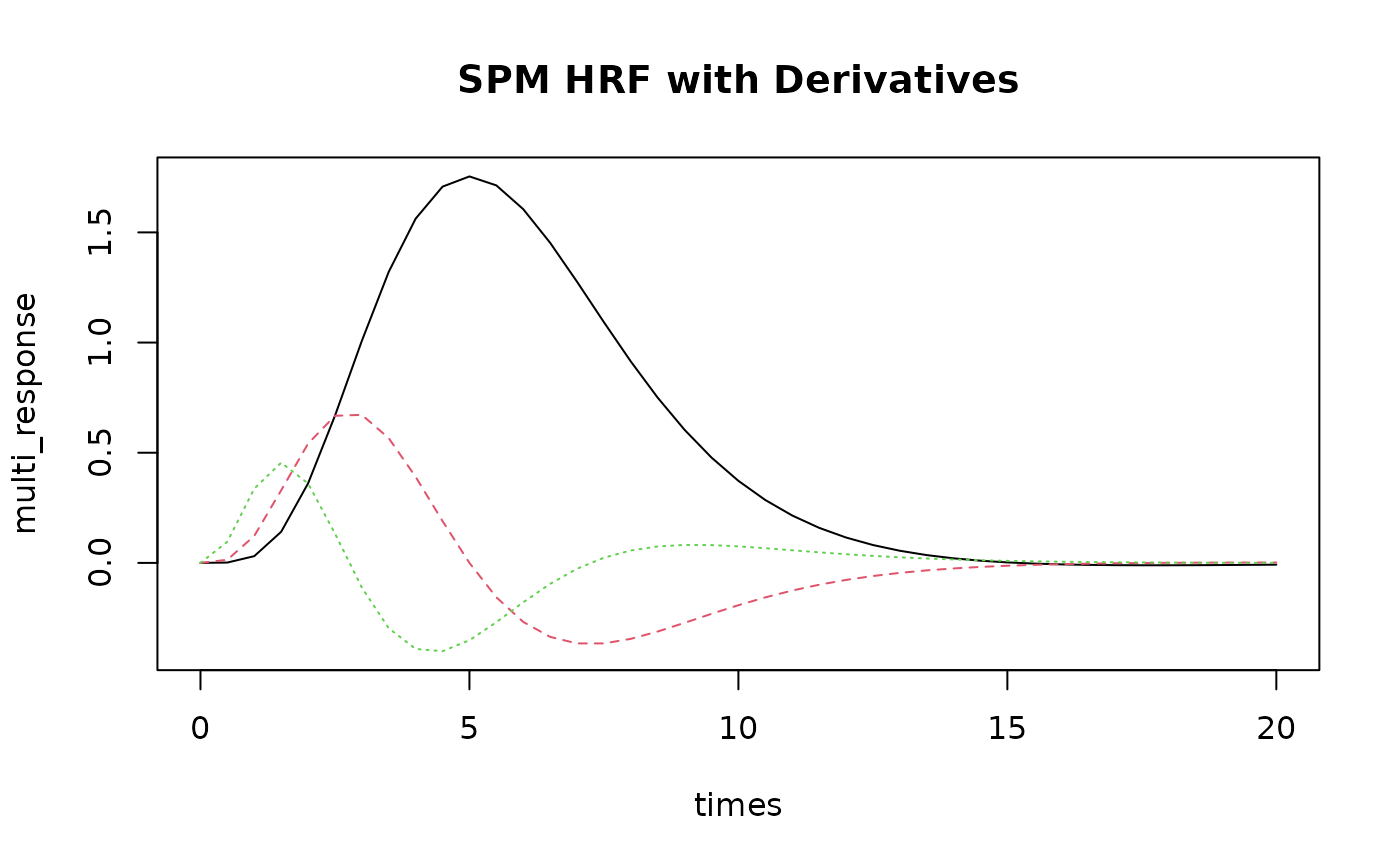 # Gamma and Gaussian HRFs
gamma_response <- HRF_GAMMA(times)
gaussian_response <- HRF_GAUSSIAN(times)
# Compare different HRF shapes
plot(times, canonical_response, type = "l", col = "blue",
main = "HRF Comparison", ylab = "Response")
lines(times, gamma_response, col = "red")
lines(times, gaussian_response, col = "green")
legend("topright", c("SPM Canonical", "Gamma", "Gaussian"),
col = c("blue", "red", "green"), lty = 1)
# Gamma and Gaussian HRFs
gamma_response <- HRF_GAMMA(times)
gaussian_response <- HRF_GAUSSIAN(times)
# Compare different HRF shapes
plot(times, canonical_response, type = "l", col = "blue",
main = "HRF Comparison", ylab = "Response")
lines(times, gamma_response, col = "red")
lines(times, gaussian_response, col = "green")
legend("topright", c("SPM Canonical", "Gamma", "Gaussian"),
col = c("blue", "red", "green"), lty = 1)
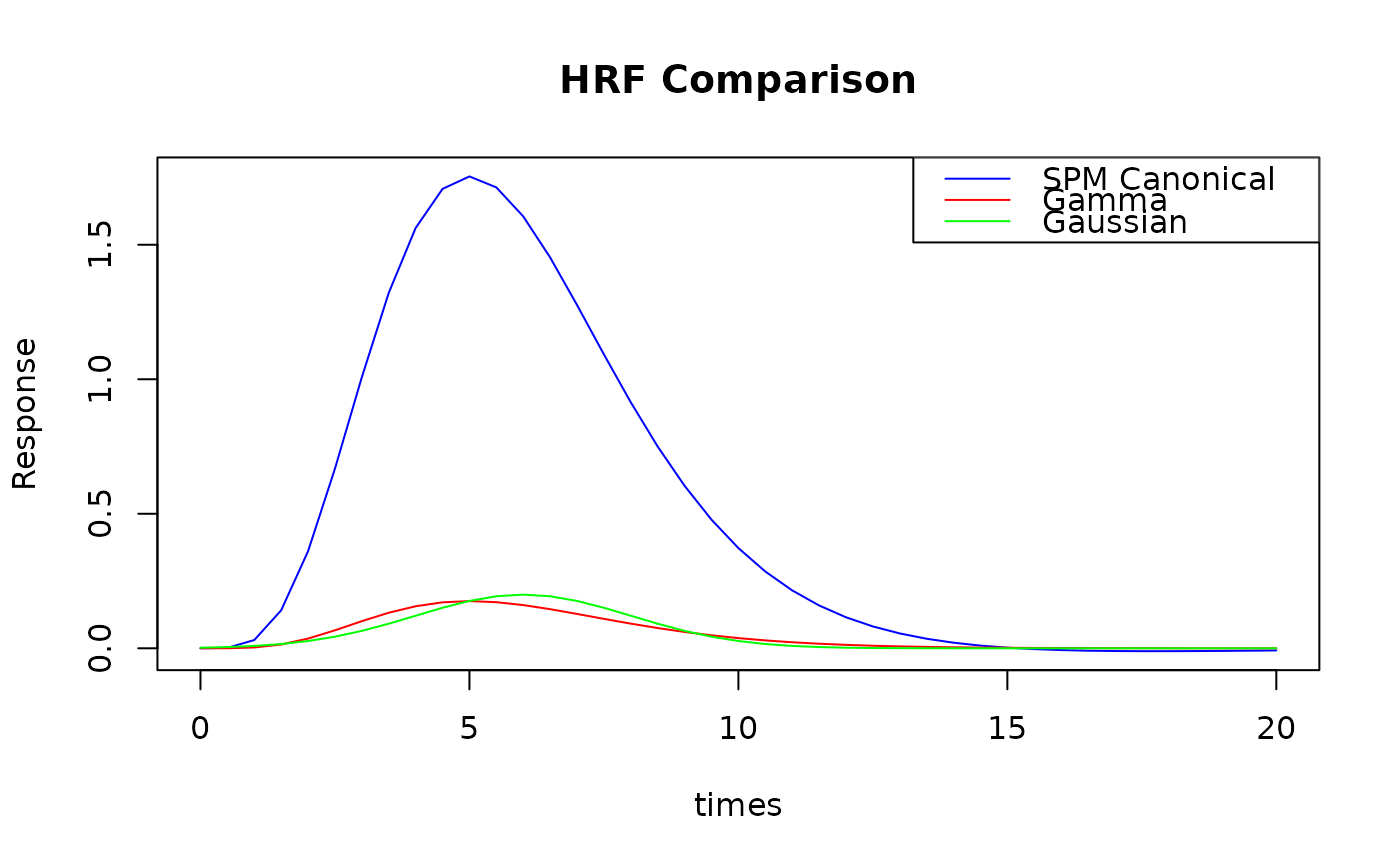 # Create custom FIR basis with 20 bins
custom_fir <- getHRF("fir", nbasis = 20, span = 30)
#> Warning: Parameters nbasis, span, bin_width are not arguments to function fir and will be ignored
fir_response <- evaluate(custom_fir, times)
matplot(times, fir_response, type = "l", main = "Custom FIR with 20 bins")
# Create custom FIR basis with 20 bins
custom_fir <- getHRF("fir", nbasis = 20, span = 30)
#> Warning: Parameters nbasis, span, bin_width are not arguments to function fir and will be ignored
fir_response <- evaluate(custom_fir, times)
matplot(times, fir_response, type = "l", main = "Custom FIR with 20 bins")
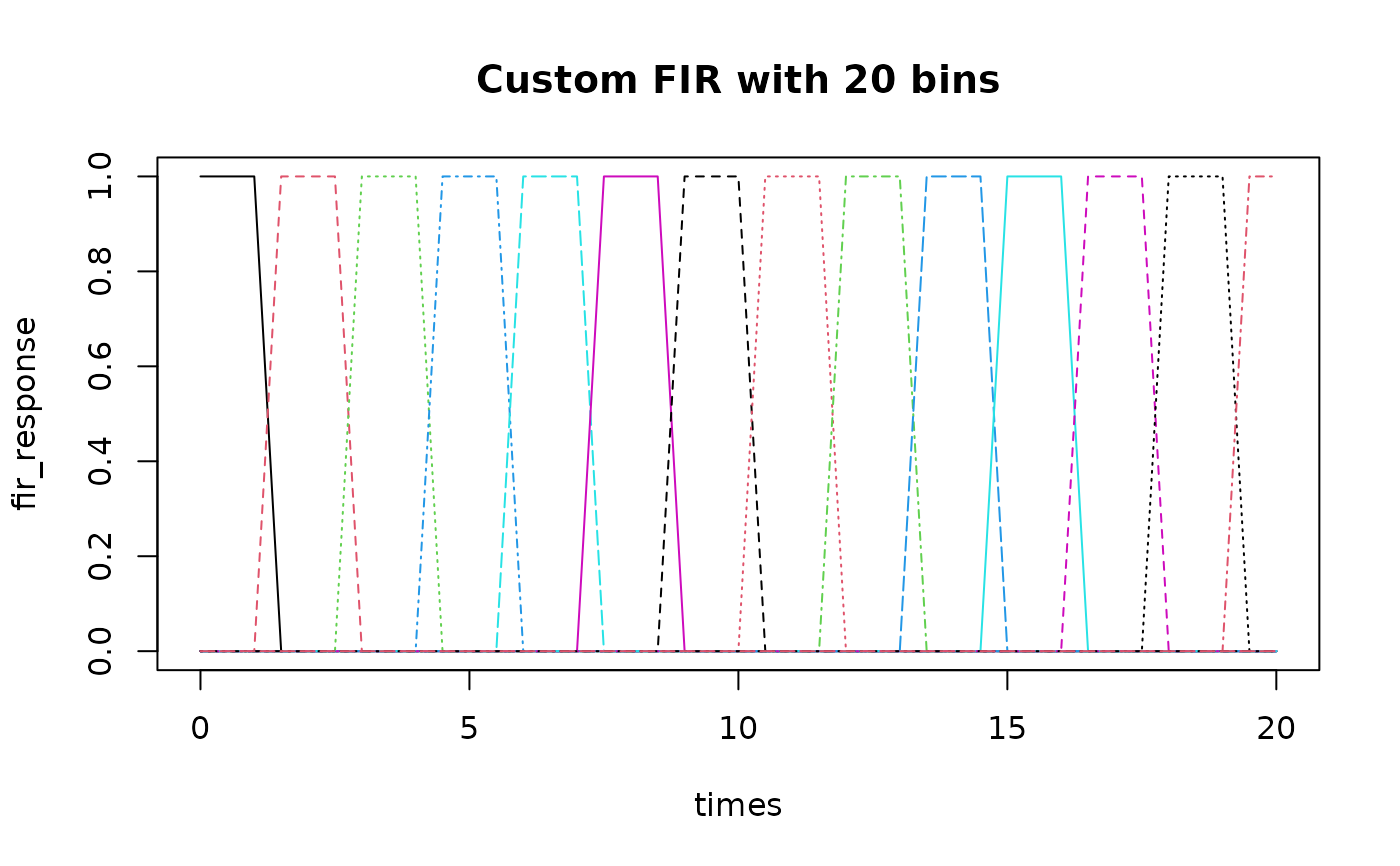 # Create custom B-spline basis
custom_bspline <- hrf_bspline_generator(nbasis = 8, span = 25)
#> Warning: Parameters nbasis, degree, span are not arguments to function bspline and will be ignored
bspline_response <- evaluate(custom_bspline, times)
matplot(times, bspline_response, type = "l", main = "Custom B-spline with 8 basis functions")
# Create custom B-spline basis
custom_bspline <- hrf_bspline_generator(nbasis = 8, span = 25)
#> Warning: Parameters nbasis, degree, span are not arguments to function bspline and will be ignored
bspline_response <- evaluate(custom_bspline, times)
matplot(times, bspline_response, type = "l", main = "Custom B-spline with 8 basis functions")
